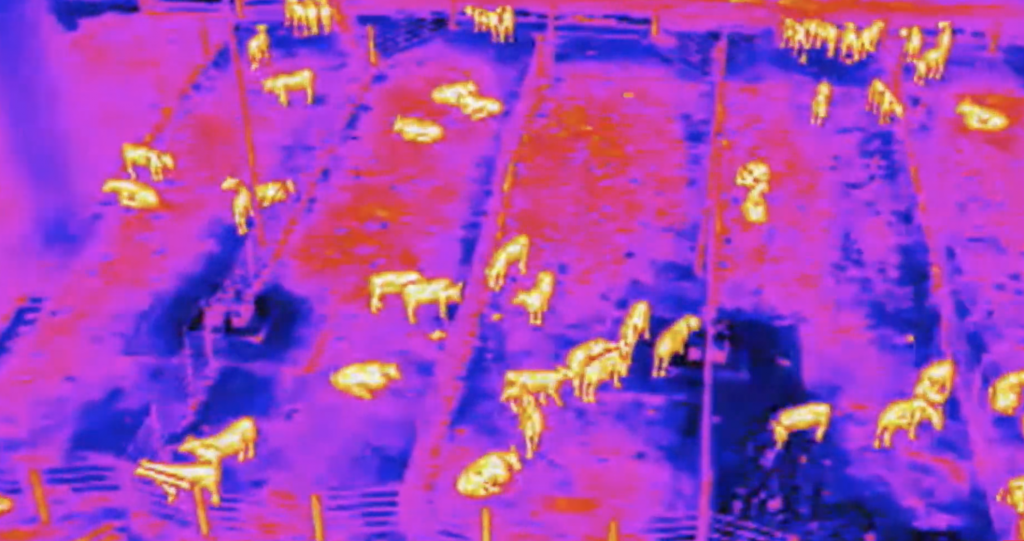Source: AgriLife Today | Feb. 27, 2019

Engineers from Texas A&M AgriLife Research believe that producers will be able to detect sick animals earlier and target their use of antibiotics more precisely than is possible with current technology. (Texas A&M AgriLife Research)
Scientists within The Texas A&M University System are testing new technologies at a feedlot in the Texas Panhandle to find ways to reduce the use of antibiotics in livestock and provide consumers with a healthy meat supply.
Lately, drones equipped with thermal imaging cameras have been buzzing over a research feedlot near Amarillo, as researchers develop test methods to identify feverish animals before they show symptoms of illness, like eating less feed or infecting other animals.
Engineers from Texas A&M AgriLife Research believe that producers will be able to detect sick animals earlier and target their use of antibiotics more precisely than is possible with current technology.
Small, remote-controlled and unmanned aerial vehicles are already central to a type of technology-assisted farming known as “precision agriculture.” For years, drones have been used to monitor crops to help reduce water, fertilizers and pesticides.
But now their use is being explored with livestock. It is a your-antibiotics of precision agriculture, Texas A&M University System Chancellor John Sharp said.
“Millennials are getting blamed all the time for destroying industries, but in this case, they are creating one,” Sharp said. “Demand for antibiotic-free meat and ingenuity from Texas A&M AgriLife Research scientists is leading to some very exciting technology and a new segment of precision agriculture.”

Dr. Brent Auvermann, center director at Texas A&M AgriLife Research and Extension Center in Amarillo, said drones are being used more than ever nowadays to address issues of modern life.
“By taking images and using sensors of different kinds from above, we think we’ll be able to tell what needs to be done and go do it,” he said.
The use of drones to pick out sick cattle isn’t AgriLife Research’s only way to spot sick livestock. Scientists in College Station and the Panhandle also are experimenting with video cameras and artificial intelligence to identify ailing animals based on their behavior.
“Veterinarians already use thermal imaging in their clinical practice, for example, to detect lameness in horses,” Auvermann said. “We’re thinking we ought to be able to put a thermography instrument up in the air and extend its usefulness, especially as the technology gets better and cheaper.”
The efforts with drones and artificial intelligence in the heart of the world’s beef industry are just a couple of examples of the wide scope of work being done by experts at AgriLife Research.
The state’s premier agricultural research agency, AgriLife Research led the nation in terms of federal grants for the sixth year in a row. AgriLife Research topped more than 200 universities across the country when it brought in more than $192 million in agricultural research expenditures in 2017, according to the National Science Foundation.
During a tour of the research feedlot in Bushland, Sharp said, “Texas A&M AgriLife Research is the No. 1 research organization in the United States of America, which quite frankly is to say, the world.”
For more, visit AgriLifeResearch.tamu.edu
